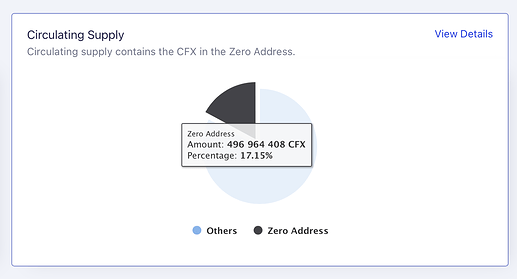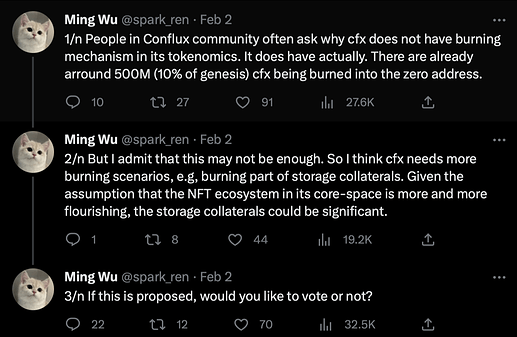Conflux CTO’s tweet about the published CIP107 (link) with the title: “Burning a DAO-adjustable proportion of the storage collateral when refunding.” seems like a great step toward reducing CFX’ circulating supply in the long-run and should really benefit us investors and holders in the long-run 
Although the Conflux Foundation has already burned close to 500 Million CFX via the Voting Proposals 11, 7, 4 and 2 (see: https://www.confluxhub.io/governance/vote/proposals), it seems like not many holders, investors and potential new investors are aware of it. Hopefully the CIP will be implemented to increase a more steady burning mechanism of CFX in the long-run and who knows, maybe it’ll lead to more burning mechanisms in the long-run as Ming stated in his recent twitter thread 
https://www.confluxscan.io/pow-charts/circulating
Would love to heard more opinions from the community regarding the latest CIP, and see what the general sediment is on this proposal! It seems like the twitter people are generally in favour of CIP107 being implement, are you?
- FOR the burning mechanism stated in CIP107
- AGAINST the burning mechanism stated in CIP107
0 voters


